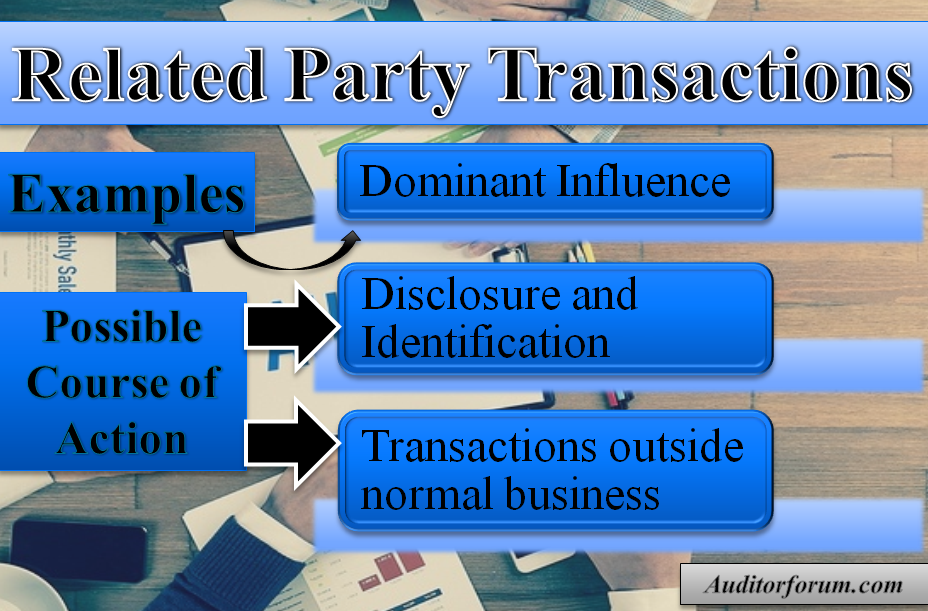Related Party
Definition: Related Parties are individuals, organisations or entities that have or might have undue influence on the company or entity which is audited.
Examples:
- the directors and key management of a company
- their families
- other companies controlled by directors, key managers and members of their close family
- other companies in the same group.

Existence of Related Parties or Related Party Transactions
ABC Limited is an unquoted public company. A large part of its business is carried out with persons / organisations who are related to the management or the shareholders.
Required: State procedures which an auditor may perform for determining the existence of related parties or related party transactions.
Procedures which an auditor may perform for determining the existence of related parties or Related Party transactions.
- Evaluate the company’s procedures for identifying and for properly accounting for related-party transactions.
- Inquire of management regarding:
- the identity of the entity’s related parties, including changes from prior period;
- the nature of relationship between the entity and these related parties; and
- whether entity entered into any transaction with these related parties during the period and, if so, the type and purpose of the transactions.
- Inspect information supplied by the entity to regulatory authorities
- Identify all employee benefit plans and the names of the officers and trustees thereof.
- Review shareholder registers to identity the entity’s principal shareholders.
- Review material investment transactions during the audit period to determine whether the nature and extent of investments during the period create related parties.
- Review contracts and agreements with key management or those charged with governance.
- Review significant contracts re-negotiated by the entity during the period.
- Review significant contracts and agreements not in the entity’s ordinary course of business.
- Review of internal auditor’s report
- Review of third party confirmations obtained by the auditor
- Minutes of meetings of shareholders and of those charged with governance.
Identification and Completeness of Related Party Transactions
Describe the procedures that the auditor may perform, in order to ensure the completeness of the information provided by the management, about related parties.
Procedure to identify Related Parties
The auditor may perform the following audit procedures to ensure the completeness of the information provided by management about related parties:
- Review prior year working papers for names of known related parties;
- Review the entity’s procedures for identification of related parties;
- Inquire as to the affiliation of those charged with governance and officers with other entities;
- Review shareholder records to determine the names of principal shareholders or, if appropriate, obtain a listing of principal share-holders from the share register;
- Review minutes of the meetings of shareholders and those charged with governance and other relevant statutory records such as the register of directors’ interests;
- Inquire of other auditors currently involved in the audit, or predecessor auditors, as to their knowledge of additional related parties; and
- Review the entity’s income tax returns and other information supplied to regulatory agencies.
For more practicing questions and answers on Related Party click on the following link of auditorforum.com We are keen to know your views in comments.
Related Party Transactions their dominant influence and disclosures related Q/A.

